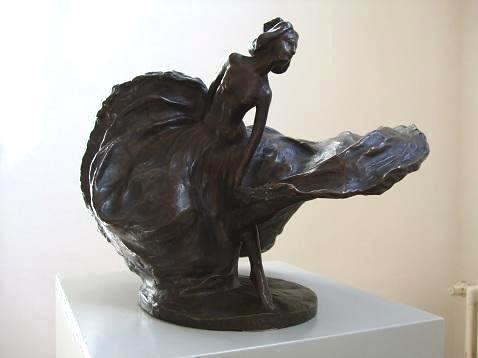wanderlust
Moving Moments Captured

‘Dance, dance, otherwise we are lost’ – legendary choreographer, Pina Bausch’s famous quote resonates with the sculptures displayed in the Georg Kolbe museum’s current exhibition, ‘TanzPlastik’.
Dance and sculpture, seemingly opposed – one fleeting, fluid, moving; the other static, solid, still – are united in an impressive array of artworks that almost leap out of the exhibition hall. Disappearing moments are immortalised through the bronze figures, which convey dancers in full stretch, extending a leg into grande battement or bodies slightly relaxed as if between demanding moves. Stunning is the sense of speed and elegance captured in the swirling dresses of waltzing dancers in the exhibition’s entrance.
Extending the boundaries of sculpture
The sculptures viewed in the first two rooms of the exhibition, including those of Georg Kolbe, were created in the first half of the 20th century. Historically, this brought a new dynamism to the art from, depicting figures in positions never before captured through sculpture. Highly popular, these artworks reflect fashionable contemporary dance forms of the time, including vaudeville. They convey hints of eroticism and an awareness of body that lead to new types of dance performances. Abstract sculptures are presented as the exhibition moves on, giving impressions of the power and energy that dancers emit. The final collection of figures are complemented by photographs of well-known dancers, which offers a seamless journey from the early 1900s to recent years.

The exhibition left me inspired and pining for the dance classes of my youth in a similar way to ‘Pina’, the documentary about legendary choreographer, Pina Bausch.
Dancing with the devil
On a sunny spring day, as have begun to envelope Berlin, a visit to TanzPlastik can be teamed up with a stroll up Teufelsberg (Devil’s Mountain) – Berlin’s highest point (only 80 metres above the surrounding plane). It’s a 20 minute walk from the museum and offers satisfying views over Berlin. The curious history of the artificial hill however, is what draws people to it. It is built on top of a Nazi college which allied forces attempted to demolish following the end of World War II. The building proved so sturdy, that is was easier to cover it in debris. A US security station which operated until the fall of the Berlin wall still stands atop the hill, and those adventurous enough to clamber up to it can peek inside.
- Georg Kolbe Museum ‘TanzPlastik’ Group Exhibition, Feb 26th – May 28th 2012, Tue-Sun: 10am – 6pm
Be the first to write a comment.
Your feedback
